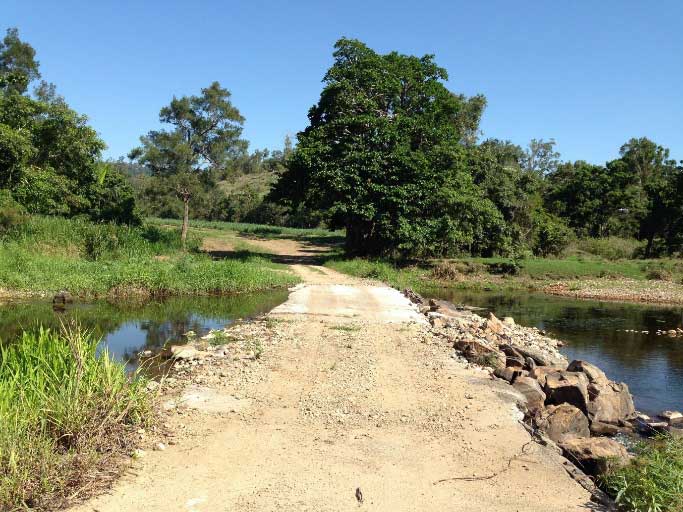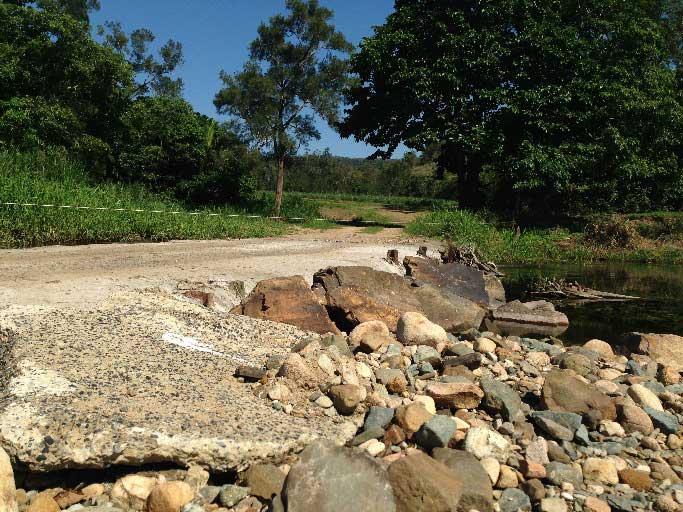Fish passage and waterway barrier works
Catchment Solutions have provided fish passage services to local and state governments and natural resource management groups. Many of these projects involve the retrofitting of fishways to existing barriers to improve ecosystem health, but increasingly our services are being requested for new developments such as causeway replacements, weir upgrades and bed control structures.
Operational works associated with the construction or modification of instream infrastructures have the potential to impede fish passage within the stream. The Queensland Government have implemented legislation to mitigate any potential impacts. Under this legislation, such developments have to meet the Accepted development requirement for operational work that is construction or raising waterway barrier work (self-‐assessable code) OR, be assessed against the State Development Assessment Provisions (SDAP) code for construction or raising waterway barrier works.
To ensure that legislative requirements are met and adequate provisions for fish passage are provided, design input from fish passage specialists is recommended. Developments which are assessed against the SDAP code often include conditions for construction of fish passage components to be supervised by a person or entity that is suitably qualified and experienced in fish passage biology and fish passage design and construction, and also that monitoring programs be implemented to ensure that the fish passage provisions are functioning as designed. Catchment Solutions’ Fisheries and Aquatic Ecosystems team have extensive experience in fish
passage and offer a range of services including:
• Fishway design,
• Waterway barrier works development approval facilitation,
• Construction supervision,
• Monitoring and evaluation,
• Waterway fish community assessment (electrofishing), and
• Barrier assessment & prioritisation.
Demonstrated projects with State development approval
Catchment Solutions have provided fish passage services to local and state governments and natural resource management groups. Many of these projects involved the retrofit of fishways to existing barriers to improve ecosystem health, but increasingly our services are being requested for new developments such as causeway replacements, weir upgrades and bed control structures.
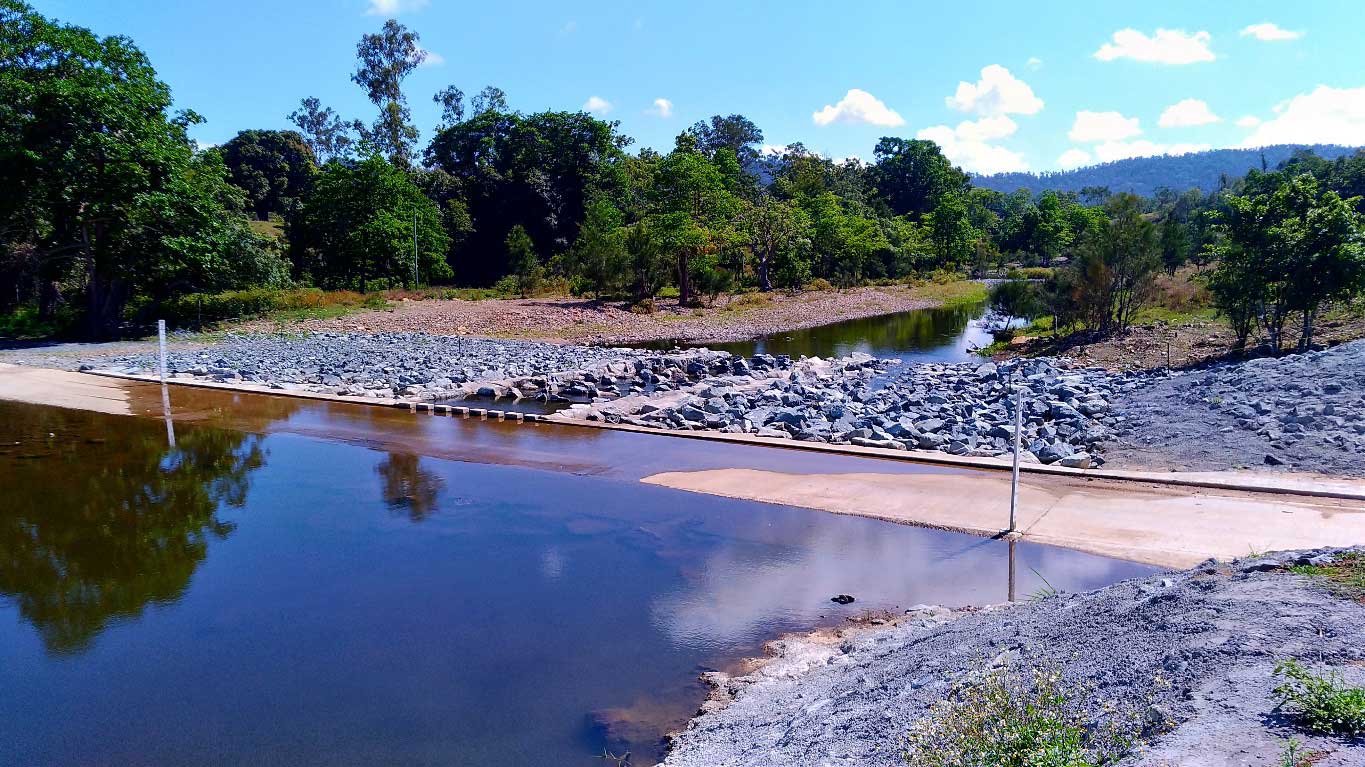 Figure 1. Clews Road causeway was upgraded in 2019 with a concrete flooded causeway. Fish passage provisions incorporated a low flow rock ramp and high flow graded scour protection to the width of the main channel.
Figure 1. Clews Road causeway was upgraded in 2019 with a concrete flooded causeway. Fish passage provisions incorporated a low flow rock ramp and high flow graded scour protection to the width of the main channel.
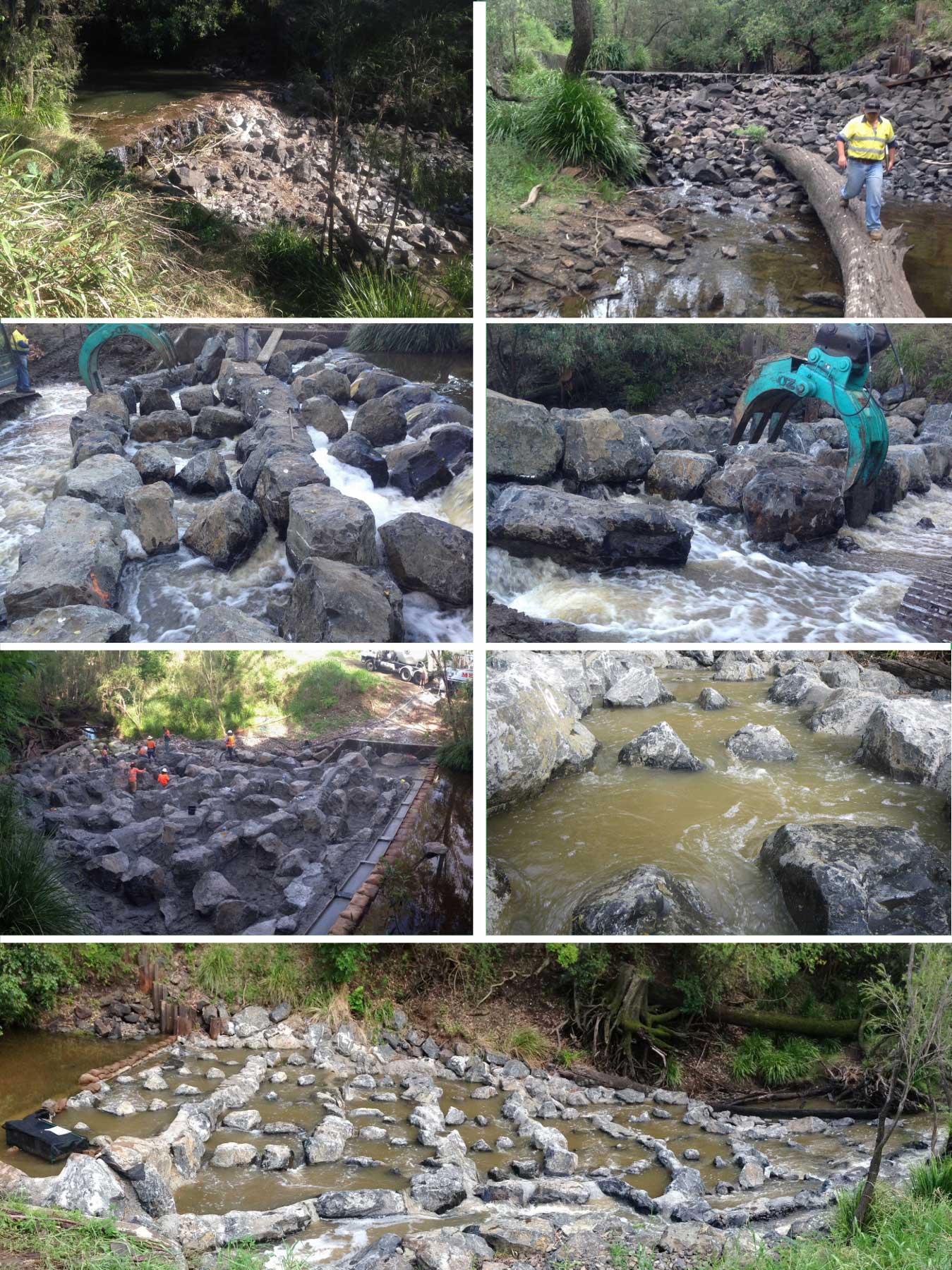 Figure 2. Berry’s weir on the Bremer River at Ipswich, A historic weir retrofitted with the longest rock-‐ramp fishway in Queensland.
Figure 2. Berry’s weir on the Bremer River at Ipswich, A historic weir retrofitted with the longest rock-‐ramp fishway in Queensland.
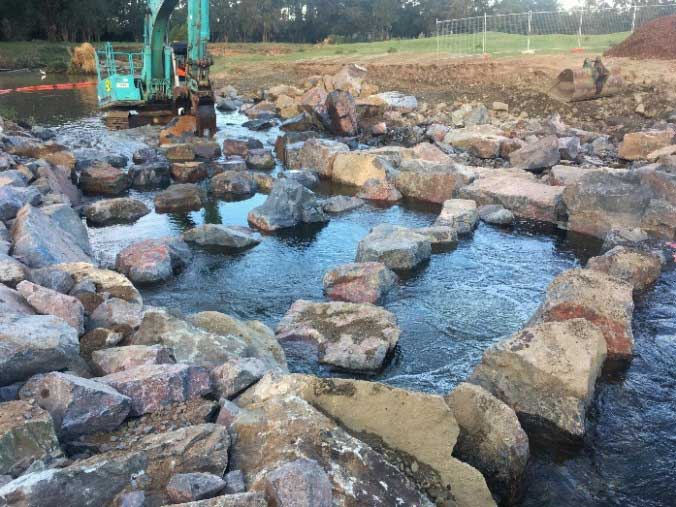
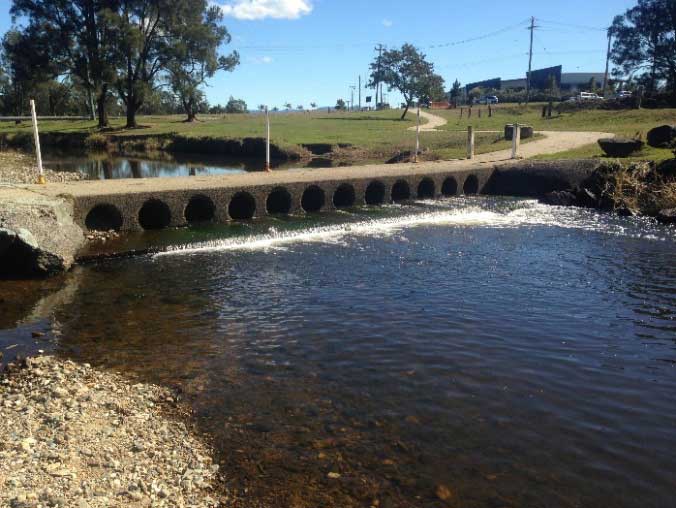
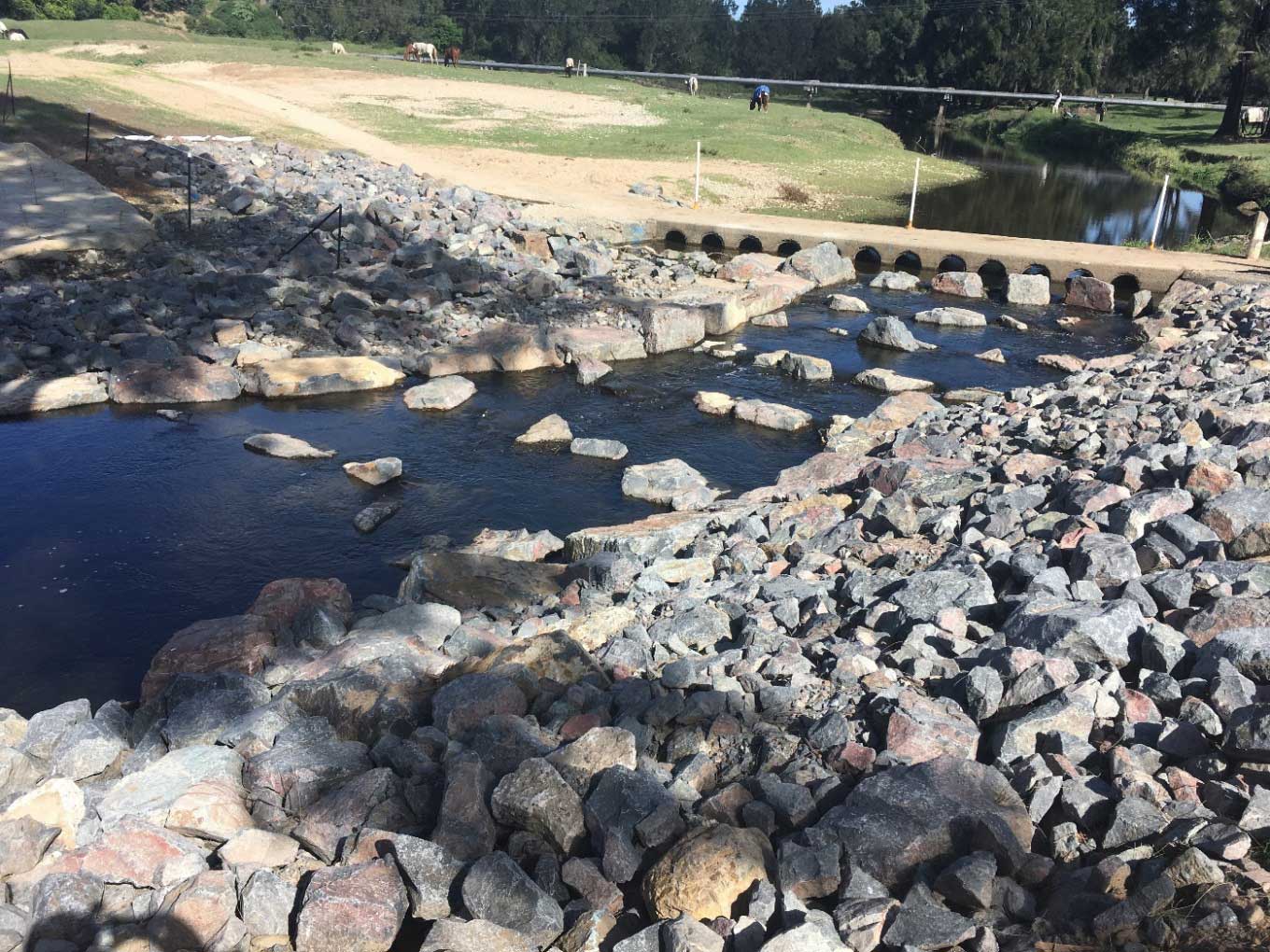 Figure 3. South Pine River fishway at Leitch’s Crossing in Brendale, retrofitted to a pedestrian causeway under state development approval in 2017.
Figure 3. South Pine River fishway at Leitch’s Crossing in Brendale, retrofitted to a pedestrian causeway under state development approval in 2017.
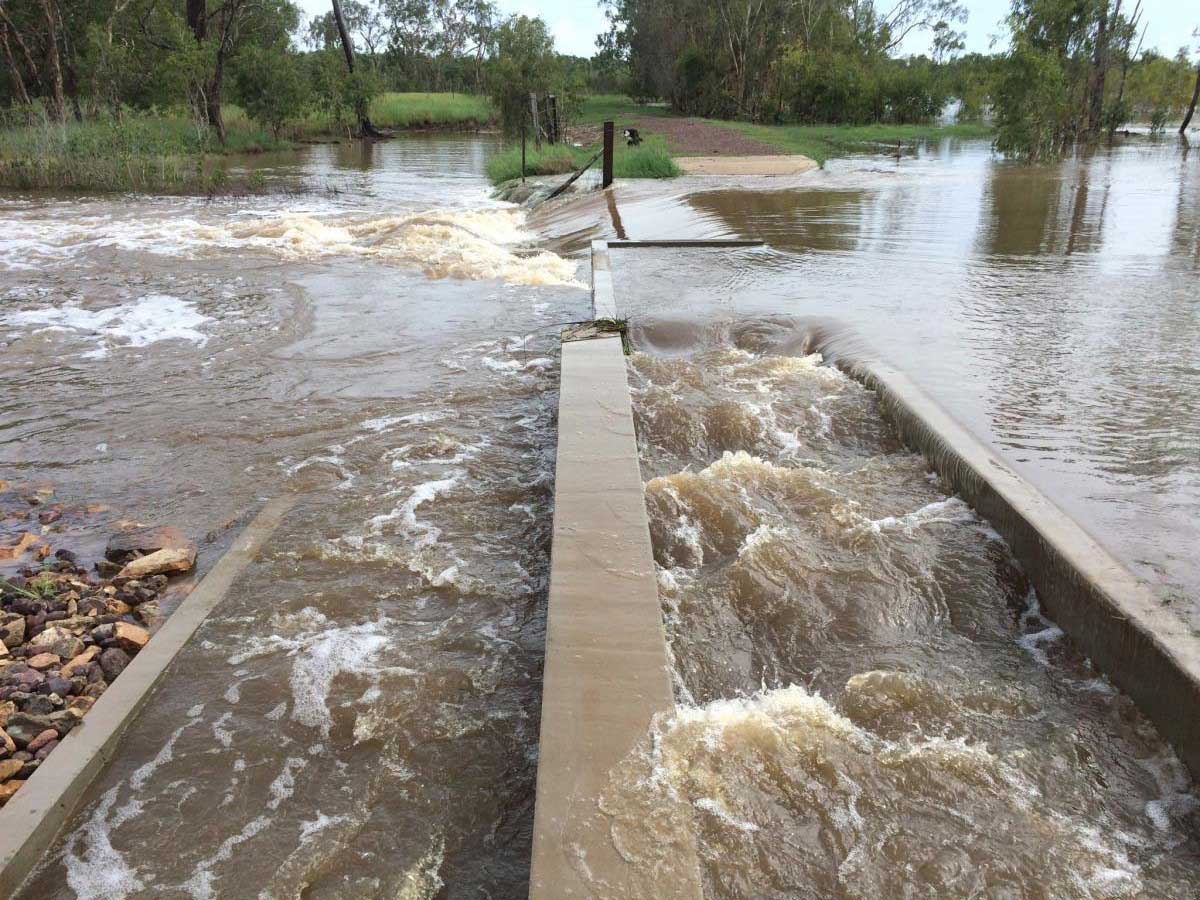 Figure 4. Boundary Creek cone ramp fishway was retrofitted to a ponded pasture spillway to provide connectivity between the estuary and wetland nursery fish habitats upstream.
Figure 4. Boundary Creek cone ramp fishway was retrofitted to a ponded pasture spillway to provide connectivity between the estuary and wetland nursery fish habitats upstream.
